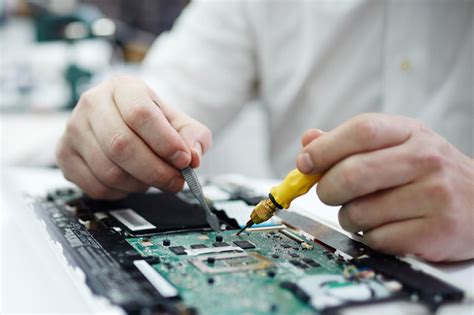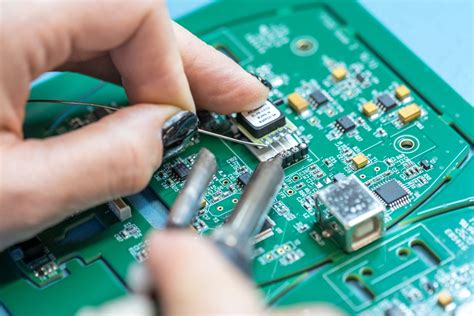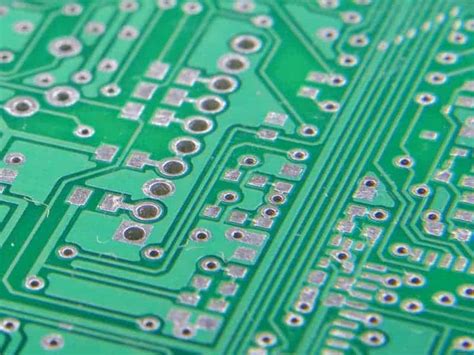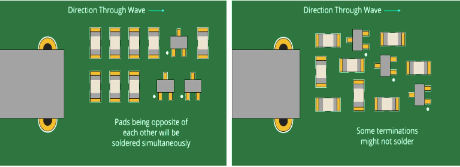Mastering Circuit Board Design and Manufacturing for Success
Key Takeaways
Mastering the intricacies of pcb manufacturing is crucial for anyone embarking on electronic projects. First, familiarize yourself with the best practices that underpin successful pcb manufacturing companies; adherence to these can drastically improve project outcomes. Understanding design for manufacturability (DFM) principles will empower you to create designs that are not only functional but also economical. This leads you to effectively manage your pcb manufacturing cost, allowing you to strike a balance between quality and expense. Remember, collaboration with your chosen pcb manufacturing business should be proactive; clear communication about your project specifications can help mitigate common challenges in PCB design. Leverage advanced technologies to streamline your processes and enhance production efficiency, ensuring that the quality of your final product remains uncompromised. Overall, these strategies will empower you to navigate the complexities of circuit board design and manufacturing with greater confidence and success.
Mastering Circuit Board Design Techniques
Mastering circuit board design is crucial for the success of your electronic projects. A strong foundation in pcb manufacturing techniques allows you to navigate the complexities of creating efficient and reliable circuit boards. Begin by prioritizing design for manufacturability (DFM), as this approach helps in minimizing potential issues during production, ultimately reducing your pcb manufacturing cost.
Engage with experienced pcb manufacturing companies to gain insights into best practices. Conduct thorough research on the materials and components that best suit your design, ensuring compatibility and functionality. Utilizing simulation software can significantly enhance your design process by allowing you to visualize potential challenges before they arise on the physical board.
| Key Design Techniques | Description |
|---|---|
| Use of Reference Designs | Start with proven designs as a template |
| Component Placement | Prioritize efficiency to reduce trace lengths |
| Signal Integrity Management | Ensure clean signal paths to avoid degradation |
“Understanding the fundamentals can save you time and money in the long run.”
Take comfort in knowing that collaboration with a reputable pcb manufacturing business will provide you with valuable feedback throughout your project development. By integrating feedback into revisions, you can enhance your final product’s quality and functionality, leading to successful outcomes for your electronic projects.
This disciplined approach not only aids in achieving high-quality production but also helps maintain robust relationships with manufacturers, often translating into better pricing and services due to consistent quality results. For further learning about effective pcb production strategies, delve into resources provided by industry leaders like Andwin PCB.
Understanding the Fundamentals of Circuit Board Manufacturing
In the realm of pcb manufacturing, having a solid grasp of the fundamentals is crucial for ensuring successful electronic projects. At its core, pcb manufacturing involves several key processes, including design, fabrication, and assembly. You must understand how these processes interconnect to avoid complications that could lead to increased pcb manufacturing costs. When selecting pcb manufacturing companies, consider their capabilities in these areas and how their experience can align with your project needs. It is also important to familiarize yourself with various materials and their properties; the choice of substrate, traces, and finish can significantly influence the performance and reliability of your product. Furthermore, effective communication with your chosen pcb manufacturing business is essential for clarifying expectations and minimizing errors during development. By focusing on these foundational concepts, you can navigate the complex landscape of pcb manufacturing more effectively, ultimately leading to higher quality outcomes in your electronic endeavors.
Best Practices for Design for Manufacturability (DFM)
When diving into pcb manufacturing, understanding the principles of Design for Manufacturability (DFM) is crucial for enhancing the efficiency of your projects. DFM focuses on designing circuit boards that are not only functional but also easy and cost-effective to produce. One important aspect to consider is the collaboration with pcb manufacturing companies, as effective communication can streamline production processes and minimize errors. Ensure that your designs utilize standard sizes and shapes, which can significantly reduce the pcb manufacturing cost by allowing better material utilization and simpler workflows. Additionally, you should pay attention to the trace width and spacing, as meeting the requirements of the pcb manufacturing business can help avoid issues during fabrication. By prioritizing these best practices in your design phase, you lay a strong foundation for a successful product and mitigate common design challenges that lead to increased costs, delays, or poor quality outcomes. Ultimately, embracing DFM principles will not only enhance your production reliability but also contribute positively to your bottom line by optimizing both quality and efficiency in pcb manufacturing endeavors.
Common Challenges in Circuit Board Design and How to Overcome Them
When delving into pcb manufacturing, you will inevitably encounter several challenges that can impede your project’s success. One common issue is the design’s complexity, which can lead to errors if not addressed properly. To mitigate this risk, it’s essential to follow established design principles and validate your designs through rigorous simulation and prototyping. Another challenge arises from selecting the right pcb manufacturing companies; doing thorough research and seeking recommendations can help you find partners who align with your project’s goals and specifications. Cost management is yet another hurdle; understanding the pcb manufacturing cost breakdown will aid in effective budgeting and prevent overspending on unnecessary features. Additionally, as technology evolves, staying updated with modern techniques is crucial; consider engaging with suppliers who offer resources or workshops on current trends within the pcb manufacturing business landscape. By proactively addressing these issues, you can streamline your design process and enhance the overall quality of your electronic projects, ultimately leading to a more successful outcome.
Ensuring Quality Control in PCB Production
Ensuring quality control in PCB production is critical to the success of your electronic projects. To achieve high standards, you should first familiarize yourself with the manufacturing process and set clear benchmarks for quality at every phase of production. This involves working closely with PCB manufacturing companies to understand their capabilities and limitations, as well as how they conduct their quality assurance practices. Regular audits and inspections should be instituted to monitor compliance with industry standards, which will help you identify potential issues before they escalate. Moreover, integrating advanced technologies such as automated optical inspection (AOI) can significantly enhance the detection of defects during the PCB manufacturing process, ensuring that any flawed units are caught early on. It’s also beneficial to analyze your PCB manufacturing cost in relation to quality control measures; sometimes investing in better processes can reduce long-term expenses by minimizing reworks and returns. Surpassing the challenges of quality assurance will ultimately position your PCB manufacturing business for greater reliability and customer satisfaction, leading to lasting success in your projects.
Integrating Advanced Technologies in Circuit Board Manufacturing
Integrating advanced technologies in pcb manufacturing is essential for enhancing efficiency and quality. You can leverage innovations such as automated assembly processes, advanced materials, and sophisticated design software to streamline production. Utilizing technologies like 3D printing for prototyping allows you to visualize and test designs before full-scale manufacturing, significantly reducing pcb manufacturing cost and time. Moreover, adopting IoT tools can help you monitor production in real-time, ensuring that the output meets your project’s requirements consistently. When you partner with reliable pcb manufacturing companies, inquire about their adoption of these technologies to understand how they can impact your projects positively. Emphasizing design for manufacturability (DFM) principles during the design phase can lead to smoother production processes and fewer complications, ultimately resulting in a more cost-effective pcb manufacturing business. By integrating these advanced technologies, you not only increase the reliability of your circuit boards but also gain a competitive edge in the ever-evolving electronics market.
Tips for Effective Collaboration with PCB Manufacturers
When it comes to working with PCB manufacturing companies, effective collaboration is key to ensuring that your circuit board projects succeed. Start by establishing clear communication channels; this means defining expectations and timelines early in the process. Share detailed specifications of your design, including any unique features or complex requirements, as this will help the manufacturer understand your vision and ensure alignment on the PCB manufacturing cost. Additionally, consider involving manufacturers during the design phase—an approach known as Design for Manufacturability—to identify potential issues before they arise. This collaboration can lead to significant cost savings and improved quality by allowing you to make necessary adjustments in a timely manner. Building a strong relationship with your PCB manufacturing business not only fosters trust but also encourages them to provide insights that can enhance your final product. Regular feedback exchanges throughout the production process will help fine-tune operations and assure that quality standards are met consistently. Ultimately, effective teamwork with your manufacturer is instrumental in navigating common pitfalls and achieving successful outcomes in your electronic projects.
Optimizing Costs While Maintaining Quality in Electronic Projects
When it comes to pcb manufacturing, balancing costs with quality is essential for the success of your electronic projects. One of the first steps you can take is to engage with reputable pcb manufacturing companies that understand your specific needs and can offer competitive pricing without sacrificing standards. By conducting thorough research, you can identify partners who align with your budgetary constraints while delivering high-quality results. Additionally, focusing on design for manufacturability (DFM) principles during the design phase can significantly impact the pcb manufacturing cost. By simplifying designs, minimizing complex features, and choosing appropriate materials, you can reduce waste and lead times.
Moreover, keep in mind that choosing the right materials and components ahead of time will not only ensure that your project adheres to quality benchmarks but also streamline the pcb manufacturing business process as a whole. Often, a proactive approach in component selection can mitigate unexpected costs during production. Regularly communicating with your chosen manufacturer throughout the process allows for adjustments as needed, ultimately preserving quality while being mindful of budget limitations. Emphasizing both quality and cost-effectiveness will lead to a well-rounded strategy that promotes successful outcomes in your electronic initiatives.
Conclusion
In conclusion, mastering circuit board design and manufacturing is critical to the success of your electronic projects. By understanding the intricacies of pcb manufacturing, you place yourself in a strong position to face the competitive landscape. Emphasizing best practices such as Design for Manufacturability (DFM) can make a significant difference in your project’s outcomes. When collaborating with pcb manufacturing companies, effective communication becomes key, ensuring that your design specifications are met while minimizing the pcb manufacturing cost. Keep in mind that overcoming common challenges is part of building a successful pcb manufacturing business, and remaining adaptable to technological advancements will only enhance your production quality. To achieve high-quality results, prioritize quality control throughout the entire lifecycle of your project, from initial concept to final production. Your commitment to these strategies will undoubtedly pave the way for success in your electronic ventures.
FAQs
What is PCB manufacturing?
PCB manufacturing refers to the process of creating printed circuit boards (PCBs) which are essential components in electronic devices. This involves a series of steps including design, material selection, fabrication, and assembly.
Why should I be concerned about PCB manufacturing companies?
Choosing the right PCB manufacturing companies is crucial for ensuring that your electronic projects meet quality and reliability standards. Their experience and capabilities can significantly impact the success of your project.
What factors influence PCB manufacturing cost?
Several factors affect pcb manufacturing cost, including the complexity of the design, material quality, quantity needed, and specific fabrication processes. Understanding these elements can help you budget your projects more effectively.
How can I start a PCB manufacturing business?
Starting a pcb manufacturing business requires thorough market research, understanding regulatory requirements, investment in equipment and technology, and building a strong network with suppliers and clients.
What are common challenges in PCB manufacturing?
Common challenges include ensuring design accuracy, managing production timelines, maintaining quality control, and addressing supply chain issues. Being proactive in these areas can enhance production efficiency.
How do I ensure quality control in PCB production?
Implementing strict quality control measures throughout the pcb manufacturing process, such as inspections at different stages and using advanced testing equipment, will help maintain high standards.
For more comprehensive information on pcb manufacturing, please click here.







